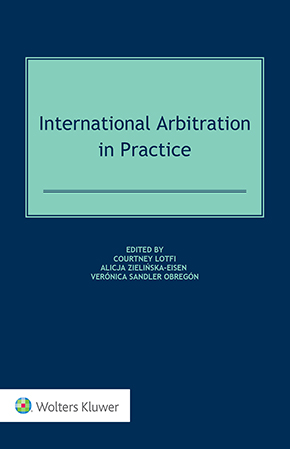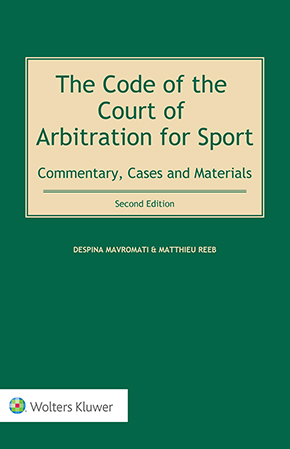Decentralised Justice and the New York Convention
September 12, 2025
In the silence of coded chains and cryptographic consensus, a new form of adjudication has emerged—one that claims the name of “justice” without courts, robes, or borders. This is decentralised arbitration, where platforms like Kleros no longer test the edges of legal orthodoxy but confront its core. As these systems produce rulings without seats or States, the question is no longer technical, but existential: can code-born justice be reconciled with the enforcement regime of the Convention on the Recognition and Enforcement of Foreign Arbitral Awards (“New York Convention” or “Convention”)—or are we approaching a clash of legal systems? This post argues that, rather than an inevitable collision, a hybrid legal model offers a credible path to compatibility, combining decentralized innovation with the procedural guarantees of conventional arbitration.
Where Law Ends and Code Begins
But what exactly is Kleros? To the uninitiated, it may seem opaque. As further discussed here, Kleros is a blockchain-based dispute resolution platform that relies on a network of jurors randomly selected from token-holding users. These jurors evaluate submitted evidence and vote on outcomes, incentivised through a native token system called Pinakion (“PNK”). The premise is radical: instead of institutional expertise, Kleros bets on the wisdom of economically incentivised, self-selected crowds. Whether that trust is misplaced or prescient remains to be seen.
Kleros is not an experiment. It is a system. Luis Bergolla et. al. named it “a decentralized sheriff,” a socio-legal organism where crowdsourced jurors, incentivised by game theory and cryptocurrency, attempt to fill a regulatory vacuum left by States. Disputes are resolved not by trained legal minds, but by the statistical coherence of the majority—a strange arithmetic of justice, both novel and unnerving.
Yet behind this technological audacity lies a truth arbitration cannot ignore: the current model is straining. International commercial disputes are growing more complex, more global, and more digital. Traditional mechanisms—hearings, awards, enforcement—are showing their age. Kleros, with its smart contracts and auto-enforcing outcomes, is not here to play. It is here to replace. Or at least, to force reinvention.
As artificial intelligence becomes more embedded in contract drafting and predictive dispute analytics, one must also ask: to whom will such intelligence defer? The arbitrator, once hailed as the private judge of global commerce, may soon find themselves co-arbitrating with lines of code. But the law—like language—is not reducible to logic. It requires interpretation, context, and empathy. That is the jurisprudential tension in which Kleros operates: the mechanisation of judgment within a human legal order. Therefore, one must ask: can trust be automated? Can a pseudonymous network of jurors—however efficient—truly replace the legitimacy that comes from deliberation, precedent, and institutional memory?
Stateless Systems and the Anchor of Enforceability
No matter how elegant a system may be, enforceability remains the true test of legal architecture. According to Article I of the New York Convention, an arbitral award must be made in the territory of a contracting State to benefit from international enforcement. Stateless mechanisms, floating without a seat, risk falling outside this regime.
Even when parties embed dispute resolution clauses in smart contracts, Article II of the Convention requires a valid agreement in writing—sometimes interpreted by courts and commentators as requiring sufficient clarity on essential elements—such as the seat or applicable procedural rules—to avoid being classified as a pathological clause, potentially jeopardising enforcement. Kleros awards, absent this context, may be seen as procedurally deficient and thus unenforceable. As Yeoh notes, an award rendered by pseudonymous jurors without the possibility to present arguments may also be refused recognition under Article V(1)(b) of the Convention. Without a legal framework—seat and procedural integrity—decentralised rulings are paperless tigers.
While supporters highlight the possibility of self-enforcing smart contracts that trigger automatic transfers of on-chain assets, such mechanisms cannot fully replace recognition by State authorities when enforcement against off-chain assets or resistant parties is necessary. For further discussion, see Paulsson and Bautista. Automated enforcement also raises dilemmas. The capacity to implement outcomes without human intervention may be efficient, but it also magnifies the risk that an award is executed without regard for due process or public policy.
The Delocalisation Debate: Lessons from Belgium
A cautionary example can be found in Belgium’s experiment with delocalised arbitration. In 1985, Belgium enacted legislation eliminating the possibility of setting aside arbitral awards rendered in its territory when none of the parties had a relevant link with Belgium. This effectively created a form of Stateless arbitration. While this was heralded as a triumph of party autonomy, it proved commercially unattractive. As Bernard Hanotiau notes, the reform “dissuaded rather than encouraged parties to choose Belgium as the seat”, with most businesses avoiding a system perceived as offering no safety net, no appeals, and no transparency. Ultimately, the Belgian approach was repealed in 1998.
The lesson is clear: absolute autonomy can be as threatening as absolute control. Even in private justice, legitimacy demands an anchor.
The Mexican Precedent: A Bridge Between Code and Court
In May 2021, a Mexican court took what may be the first judicial step toward bridging blockchain justice and State legitimacy. As Maxime Chevalier reported, the court enforced a traditional arbitral award that embedded a Kleros-rendered decision, creating a procedural hybrid: code-fed substance wrapped in formal legal form.
It was not the blockchain ruling itself that was enforced, but the human arbitrator's award that absorbed it. Here, the law extended its hand—not fully, but enough to gesture toward a future of integration. Kleros remained legally invisible, yet operationally central. This episode has been called “the first stone” in constructing a possible bridge between blockchain and the Convention’s enforcement culture.
Other jurisdictions have begun to take notice. In jurisdictions such as Singapore and Hong Kong, where digital governance is agile, institutional and market actors have shown growing interest in blockchain‑enabled smart‑contract mechanisms—including smart clauses—for more autonomous adjudication of low‑value commercial disputes.
This raises a crucial question: can judicial systems afford to ignore these embryonic models much longer? Or will continued resistance only widen the legitimacy gap between digital commerce and the courts intended to serve it?
Hybrid Justice: Between Decentralisation and Due Process
Rather than choosing between decentralised or traditional arbitration, a more fertile avenue may be hybridisation. This model preserves party autonomy while anchoring enforceability. As proposed by the DAMN project, a decentralised decision can be subjected to a secondary phase of formal arbitration, where the blockchain-derived outcome is reviewed and rendered enforceable under a recognised institutional framework.
Unlike the Mexican case discussed by Maxime Chevalier, where the Kleros decision was incorporated into an arbitral award without meaningful scrutiny, this model envisions the arbitrator performing an explicit verification of procedural fairness and substantive consistency. Such fairness is not just theoretical. It is increasingly measurable. For instance, Kleros publishes detailed juror performance metrics and has experimented with appealable rounds to mitigate bias. These mechanisms, if properly documented and embedded in the arbitration clause, could reinforce the enforceability of hybrid awards.
This model may be capable of satisfying the formalities of Articles II and III of the New York Convention, allowing courts to recognise the award. Article III requires contracting States to enforce awards “in accordance with the rules of procedure of the territory where the award is relied upon,” which raises practical questions about how blockchain-derived evidence and procedural records will be authenticated and presented. Nevertheless, the combination of decentralised adjudication with a conventional confirmation layer may provide a balanced approach—efficient, accessible, and capable of meeting the minimum standards of procedural orthodoxy.
Interestingly, this does not dilute decentralised power—it expands it. Parties retain the freedom to design their evidentiary logic, linguistic protocols, or even jury pools. The human arbitrator’s task becomes that of confirmation rather than interpretation.
And here lies the radical possibility: what if formal arbitration becomes the exception, rather than the rule? What if Kleros is not a tool for niche disputes, but the scaffolding of a new architecture of justice—modular, open-source, and scalable?
Envisioning the Future: From Code to Convention
To scale, decentralised justice must move from novelty to norm. This means adopting a hybrid model by drafting smart arbitration clauses that reference enforceable seats, incorporating procedural layers that satisfy international law, and recognising when digital systems should defer to human arbitrators.
Beyond enforceability lies another promise: accessibility. Decentralised platforms can lower entry barriers for small claims and underrepresented voices in transnational justice. Where traditional arbitration is often priced out of reach, blockchain forums may offer not only cheaper resolution, but multilingual, anonymised, and publicly auditable processes. The arbitration of the future might technically be seated in Paris or London, but in practice take place in the cloud.
We stand not at a rupture, but at a convergence. Just as arbitration once emerged from the shadows of litigation, so too may decentralised justice grow within the contours of international law. If we dare to reconcile principle with protocol, code with clause, the promise of borderless arbitration may become not a utopia—but a jurisprudential frontier.
The content of this post is intended for educational and general information. It is not intended for any promotional purposes. Kluwer Arbitration Blog, the Editorial Board, and this post’s author make no representation or warranty of any kind, express or implied, regarding the accuracy or completeness of any information in this post.











